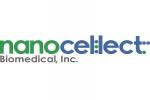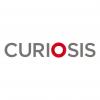Agilent provides xCELLigence impedance-based, label-free, real time cell analysis system and NovoCyte flow cytometers.
Automated microscopy and Spatial Proteomics
Automated microscopy and image analysis
Discover
Related topics
The Evolution Of IFN-A Measurement: How Simoa® Is Driving New Breakthroughs

Aug 19, 2024
The new Simoa® IFN-α Multi-Subtype Advantage PLUS Assay (Quanterix, Cat# 103836), with full automation on the HD-X...
Single-Cell Genomics applications ? Ideal work for the WOLF gentle cell sorter

Aug 2, 2024
The field of genomics and computational biology has progressed immensely over the last decade and new single-cell...
Celloger Pro live-cell analyzer: miniaturized and powerful tool for Spheroids and Organoids research

Jul 31, 2024
EV's and Nanoparticles in "Full Spectrum View" with the new Cytek ESP module

Jul 19, 2024
Cytek’s Enhanced Small Particle (ESP) Detection Option expands the capability of your Cytek Aurora or Cytek Northern...
Study finds that automated liquid-handling operations are more robust, resilient, and efficient!

Jul 18, 2024
Liquid handling devices (LHD) improve lab efficiency and accuracy. They automate liquid transfers, increase experiment...
Scaling Whole-Genome Sequencing to >50,000 single cells using cellenONE

Jul 16, 2024
cellenONE technology enabled the creation of tens of thousands of high-quality single-cell genomes, paving the way for...
Automatic, Real Time Acquisition of Bioluminescent Kinetic Curves

Jun 27, 2024
Watch this pre-recorded webinar with Dr. Andrew Van Praagh to learn how our new Aura software feature —Kinetics—...
Theranostics: From Mice to Men and Back

Jun 25, 2024
Recorded webinar
Presenters: Prof. Dr. Ken Herrmann and Prof. Dr. Katharina Lückerath – Moderator: Hannah Notebaert
Orion 2024 AACR poster: 17-plex single-step stain and imaging of cell Lung Carcinoma

Jun 21, 2024
RareCyte Orion is a benchtop, high resolution, whole slide multimodal imaging instrument. A combination of quantitative...
New release now available: Cytek Amnis AI v3.0 Software

Jun 17, 2024
The new Cytek Amnis AI v3.0 image analysis software features an integrated transfer learning algorithm, an option to...

Feb 24, 2017
Early hopes of finding a therapeutic “magic bullet” capable of eradicating all types of cancer were progressively replaced with the sobering realization that cancer consists of >100 distinct diseases that manifest in ~200 cell types with diverse genetic/mutational etiologies. For the clinician this complexity is compounded by the fact that a single disease phenotype can result from multiple genotypes, each of which requires a unique approach to treatment (estrogen dependent/independent breast cancer being a primary example). Citing that the cancer scientific literature had already become “complex almost beyond measure,” in 2000 Robert Weinberg and Douglas Hanahan stated a belief that “the complexities of the disease, described in the laboratory and the clinic, will become understandable in terms of a small number of underlying principles.”In this now famous paper they suggested that distillation of decades of research reveals “a small number of molecular,biochemical, and cellular traits – acquired capabilities – shared by most and perhaps all types of human cancer.”
Brand profile
Agilent provides xCELLigence impedance-based, label-free, real time cell analysis system and NovoCyte flow cytometers.
More info at:
www.aceabio.com